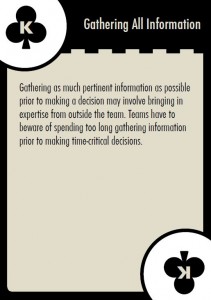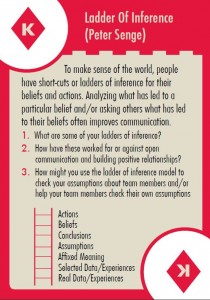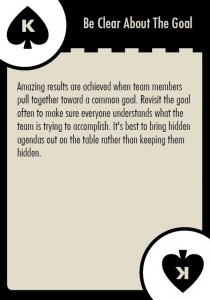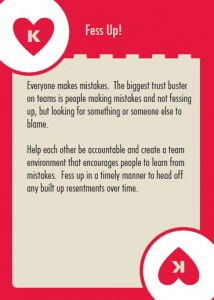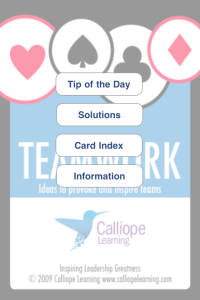Today’s Teamwork Explorer Tip is the Queen of Hearts (heart) – Celebrate Success. (Need to know more about our approach to teamwork?) See our Teamwork Explorer blog post.)
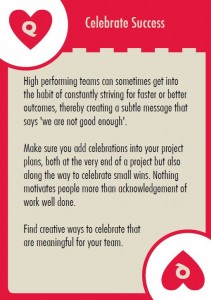
We do a lot of work with the high tech sector. We love working with them as they are curious, engaged, motivated and voracious learners who keep us on our toes. When we do teambuilding workshops with them and ask them to identify their 5 card winning hand from our Teamwork Cards, they almost always choose the Queen of Hearts, Celebrate Success. We think this is common across high performing teams who are working on complex projects where it’s not always possible to see that you’ve made progress. In our experience, everyone needs to experience some sort of success and celebrate it somehow in order to remain focused and motivated.
Queen Hearts – Celebrate Success
High performing teams can sometimes get into the habit of constantly striving for faster or better outcomes, thereby creating a subtle message that says ‘we are not good enough’.
Make sure you add celebrations into your project plans, both at the very end of a project but also along the way to celebrate small wins. Nothing motivates people more than acknowledgement of work well done. Find creative ways to celebrate that are meaningful for your team.
Do you celebrate your small wins, successes, and/or milestones? What has been the most memorable celebration you’ve had?
Curious about the rest of the tips and want to know all about them now? Then download the free Teamwork Explorer iPhone app now! More interested in the actual paper based set of cards? Visit our store!
